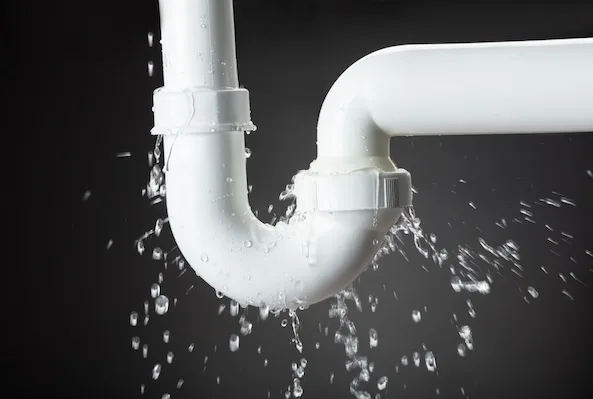We’ve all stumbled upon that infuriating leaky pipe at home. Ever stopped to consider the unseen dangers it may hide? This blog delves into such hidden threats of leaks, and offers handy strategies to preempt them, reinforcing your home’s safe haven status against these silent hazards.
Common Culprits Behind Leaky Pipes
Those sneaky drips from pipes can be attributed to a diversely kaleidoscopic array of origins – some rooted in the caprices of nature while others are the offspring of human actions. Let’s unmask some of these usual suspects:
- Age: With the relentless ticking of time, our pipes too may fall victim to age, accumulating corrosive welts or physical harm. This often paves the way for those unwelcome leaks.
- Weather conditions: Freezing temperatures can cause water in pipes to freeze and expand, eventually causing cracks or breaks in the pipe itself.
- High water pressure: Too much water pressure through your plumbing system can lead to leaks at joints or weakened spots in pipes.
- Poor installation: Improperly installed piping systems are more prone to leaks due to incorrect connections or incompatible materials.
- Movement or shifting ground: The movement of soil beneath your home’s foundation may lead to broken or damaged pipes, particularly if the ground begins to settle or shift.
The Dangers Lurking Behind Those Annoying Leaks
Leaking pipes do more than create damp patches and annoying noises. They can also pose numerous hazards that are often overlooked:
Structural Damage
A commonly known issue caused by leaking pipes is structural damage. Over time, water seepage can weaken your home’s foundation, leading to cracks that will require costly repairs. In addition, water-soaked timber or drywall can warp or rot and even necessitate entire sections of your home being replaced.
Mold Growth
The damp milieu crafted by persistent leaks crafts an ideal playground for mold to flourish. Mold isn’t just an unsightly visitor, but a menacing adversary to health, posing a major risk especially for individuals grappling with allergies, asthma, or compromised immune systems.
Stumbling into the path of toxic mold isn’t a wholesome encounter either – it can bring along a nasty suite of symptoms like headaches, fatigue, respiratory troubles, and disgruntled skin rashes.
Electrical Hazards
Yet another lurking risk is the perilous encounter between water and electrical infrastructure. It triggers the chance of shocking electrocution or even an escalated scenario of an electrical blaze threatening your sanctuary.
Pest Infestation
Insects and rodents are attracted to moisture as it provides a vital source of drinking water. A leaky pipe can invite these unwanted guests into your abode who may then become a nuisance by chewing wires, contaminating food sources or carrying diseases.
How to Identify Leaking Pipes
Recognizing the symptoms of leaking pipes forms a critical line of defense against turning these threats into reality. Here are a few straightforward techniques to brush up on:
- Watch for signs of water damage: Stay vigilant for signs of discolored patches, peeling paint or wallpaper, along with water blotches marrying your walls or ceilings.
- Inspect visible plumbing: Regularly check under sinks, near the toilet, and around appliances like washing machines for signs of leaks or dampness.
- Audit your water bill: An unexpectedly high water bill could indicate that there’s a leak somewhere in your home’s plumbing system. Compare usage against previous months to spot any unusual spikes.
Tips for Preventing Leaky Pipes
To help prevent leaky pipes and their associated dangers from affecting your home and loved ones, try implementing these preventative measures:
- Maintain proper water pressure: Installing pressure-reducing valves or regulators will help reduce strain on your home’s pipes, minimizing the risk of developing leaks due to excessive pressure.
- Incorporate pipe insulation: Insulating exposed pipes protects them from freezing during cold weather conditions, which may lead to cracks or breaks.
- Address plumbing issues promptly: Seek professional help to repair or replace aging, corroded, or damaged pipes before they develop leaks.
Let Technology Lend a Hand
Technological advancements have cleverly devised tools like smart water leak detectors to nip leaks in the bud, before they sprout into substantive damage.
Position these gizmos near potential water culprits like sinks or appliances, and they’ll alert you with alarms or smartphone notifications at the faintest hint of moisture. Some even possess the prowess to autonomously halt the main water supply upon leak detection.
The digital sphere is piqued with plentiful resources for homeowners keen to bolster their home’s plumbing health. Take this Instagram page, for instance, chock full with enlightening content on a range of topics from sniffing out leaks to proper pipe installation.

